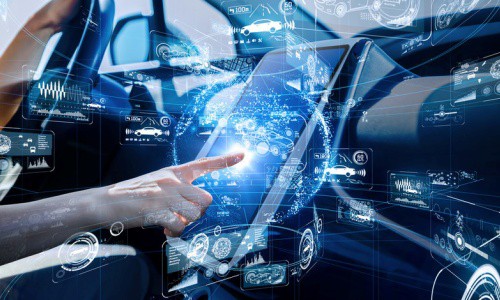Amazon Web Services (AWS) yesterday unveiled new IoT services – one geared towards helping companies to create digital twins of real-world systems, and the other targeted at helping car manufacturers to quickly and cost collect, transform, and transfer vehicle data to the cloud in near-real time.
Called AWS IoT TwinMaker and AWS IoT FleetWise, the two new services were announced at the ongoing AWS re: Invent event in Las Vegas.
AWS IoT TwinMaker is available in preview in US East (N. Virginia), US West (Oregon), Asia Pacific (Singapore), and Europe (Ireland) with availability in additional AWS Regions coming soon. Likewise, AWS IoT FleetWise with standard vehicle data collection is now available in preview in US East (N. Virginia) and Europe (Frankfurt), with availability in additional AWS Regions coming soon.
There are no up-front commitments or fees to use AWS IoT TwinMaker and AWS IoT FleetWise. Customers only pay for the AWS services used.
Building digital twins faster
Digital twins are virtual representations of physical systems that are regularly updated with real-world data to mimic the structure, state, and behaviour of the objects they represent.
Industrial companies collect and process vast troves of data about their equipment and facilities from sources like equipment sensors, video cameras, and business applications (e.g. enterprise resource planning systems or project management systems). They want to combine these data sources to create a virtual representation of their physical systems (called a digital twin) to help them simulate and optimise operational performance.

But building and managing digital twins is hard even for the most technically advanced organisations. To build digital twins, companies must manually connect different types of data from diverse sources (e.g. time-series sensor data from equipment, video feeds from cameras, maintenance records from business applications, etc.). Then, they have to create a knowledge graph that provides common access to all the connected data and maps the relationships between the data sources to the physical environment.
To complete the digital twin, a 3D virtual representation of physical systems (e.g. buildings, factories, equipment, production lines, etc.) have to be built and overlay the real-world data on to the 3D visualisation. Once there is a virtual representation of the real-world systems with real-time data, companies can build applications for plant operators and maintenance engineers that can leverage machine learning and analytics to extract business insights about the real-time operational performance of their physical systems. Because of the work required, the vast majority of organisations are unable to use digital twins to improve their operations.
“With today’s launch of AWS IoT TwinMaker, more customers can now have a holistic view of their industrial equipment, facilities, and processes to monitor and optimize all of their operations in real time,” said Michael MacKenzie, general manager, AWS IoT.
With AWS IoT TwinMaker, developers can quickly get started building digital twins of devices, equipment, and processes by connecting AWS IoT TwinMaker to data sources like equipment sensors, video feeds, and business applications.
AWS IoT TwinMaker contains built-in connectors for AWS IoT SiteWise, Amazon Kinesis Video Streams, and Amazon S3 (or customers can add their own connectors for data sources like Amazon Timestream or Snowflake) to make it easy to gather data from a variety of sources.
The new IoT service automatically creates a knowledge graph that combines and understands the relationships of the connected data sources, so it can update the digital twin with real-time information from the system being modelled. Customers can import existing 3D models (e.g. CAD and BIM files, point cloud scans, etc.), directly into AWS IoT TwinMaker to easily create 3D visualizations of the physical systems (e.g. buildings, factories, equipment, production lines, etc.) and overlay the data from the knowledge graph on to the 3D visualizations to create the digital twin.
Once the digital twin has been created, developers can use an AWS IoT TwinMaker plugin for Amazon Managed Grafana to create a web-based application that displays the digital twin on the devices plant operators and maintenance engineers use to monitor and inspect facilities and industrial systems.
For example, developers can create a virtual representation of a metals processing plant by associating data from the plant’s equipment sensors with real-time video of the various machines in operation and the maintenance history of those machines. Developers can then set up rules to alert plant operators when anomalies in the plant’s furnace are detected (e.g. temperature threshold has been breached) and display those anomalies on a 3D representation of the plant with real-time video from the furnaces, which can help operators make quick decisions on predictive maintenance before a furnace fails. With AWS IoT TwinMaker, many more customers can use digital twins to build applications that simulate their real-world systems to improve operational efficiency and reduce downtime.
Mackenzie said AWS IoT TwinMaker includes the built-in capabilities most customers need for their digital twins, such as connecting to data across disparate sources, modelling physical environments, and visualisation of data with spatial context.
“Customers are excited about the opportunity to use digital twins to improve their operations and processes, but the work involved in creating a digital twin and custom applications for different use cases is complicated, expensive, and prohibitive for most,” he added.
Already, several AWS customers are such as Carrier Global, Siemens and Accenture are currently the digital twin service.
Customised collection of vehicle data
Car manufacturers have been collecting data from standard vehicle sensors for over a decade to evaluate operational and safety indicators like engine temperature and vehicle stability. However, automakers today are building cars with new classes of advanced sensors like radar and cameras that improve vehicle safety but also generate exponentially increasing amounts of data.
They want to collect, standardise, and transfer this data to the cloud more cost-effectively, so they can use it to generate insights that help improve vehicle quality, safety, and autonomy. However, the ever-increasing variety of vehicle makes, models, and options that generate data in different proprietary formats creates a complex array of data across the vehicles on the road.

Collecting and transforming all of this vehicle data so that it can be analysed in the cloud requires automakers to build custom data collection systems that standardize the data across the wide variety of data formats, which is difficult and time-consuming. Instead, automakers want to select the data to collect and transfer to the cloud in near-real time based on their specific use case, but this type of intelligent data filtering doesn’t exist today. As a result, automakers are unable to put data to work to help solve common problems like diagnosing issues with individual vehicle performance, spotting fleet-wide issues before they become a growing problem, and using the data to improve vehicle performance and autonomy.
With AWS IoT FleetWise, automakers can easily collect and organize data in any format present in their vehicles (regardless of make, model, or options) and standardize the data format for easy data analysis in the cloud. AWS IoT FleetWise helps automakers efficiently transfer data to the cloud in near-real time using the service’s intelligent filtering capabilities that allow developers to reduce network traffic by selecting the data to transfer and defining rules for when to transfer it based on parameters like weather conditions, location, or vehicle type. Once the data is in the cloud, automakers can use it for applications that remotely diagnose issues in individual vehicles, analyze vehicle fleet health to help prevent potential recalls or safety issues, or improve advanced technologies like autonomous driving and advanced driver assistance systems with analytics and machine learning.
“While automakers have collected, stored, and analyzed vehicle data for years, they are not equipped to manage the explosion of data generated by advanced vehicle safety and autonomous driving systems, nor have they had access to the near-real-time data needed to help proactively address vehicle problems,” said Mike Tzamaloukas, general manager of IoT Automotive at AWS. “With AWS IoT FleetWise, automakers can now efficiently collect this data, transform it, and gain deep, actionable insights on the condition and usage of vehicles on the road. Automakers can now use the power of AWS to help maintain millions of vehicles, increase vehicle safety, and improve customer service.”
AWS IoT FleetWise provides automakers a managed service that makes it easier and more cost-effective to collect and transfer data from millions of vehicles to the cloud in near-real time. AWS IoT FleetWise can access the unique data format of a vehicle and then structure and standardise the data so automakers don’t have to develop custom data collection systems.
Automakers start in the AWS Management Console by defining and modeling vehicle attributes (e.g. a two-door coupe) and the sensors associated with the car’s make, model, and options (e.g. engine temperature, front-impact warning, parking assist system, etc.) for individual vehicle types or multiple vehicle types across their entire fleet.
After vehicle modeling, automakers install the AWS IoT FleetWise application on the vehicle gateway (an in-vehicle communications hub that monitors and collects data), so it can read, decode, and transmit information to and from AWS. With AWS IoT FleetWise’s intelligent filtering controls, automakers can select the exact data they need for their use cases and help reduce costs by limiting the amount of data transferred to the cloud by creating conditional rules to filter the data they want to collect and analyze (e.g. sensor data from hard-braking events associated with a vehicle make and model).
Once data is transferred to the cloud with AWS IoT FleetWise, automakers can use AWS’s breadth and depth of services to extract value from vehicle data. For example, automakers can use intelligent filtering to collect camera data from vehicles traveling on newly built highways when an autonomous driving system identifies text in road signage with less than 90% confidence. When that data is sent to the cloud, automakers can label the data for accuracy to improve the machine learning models powering autonomous driving systems. Or, automakers can use intelligent filtering to collect data from electric vehicle batteries when the temperature drops below freezing and then analyze it and run simulations in the cloud to improve battery performance in cold weather.



